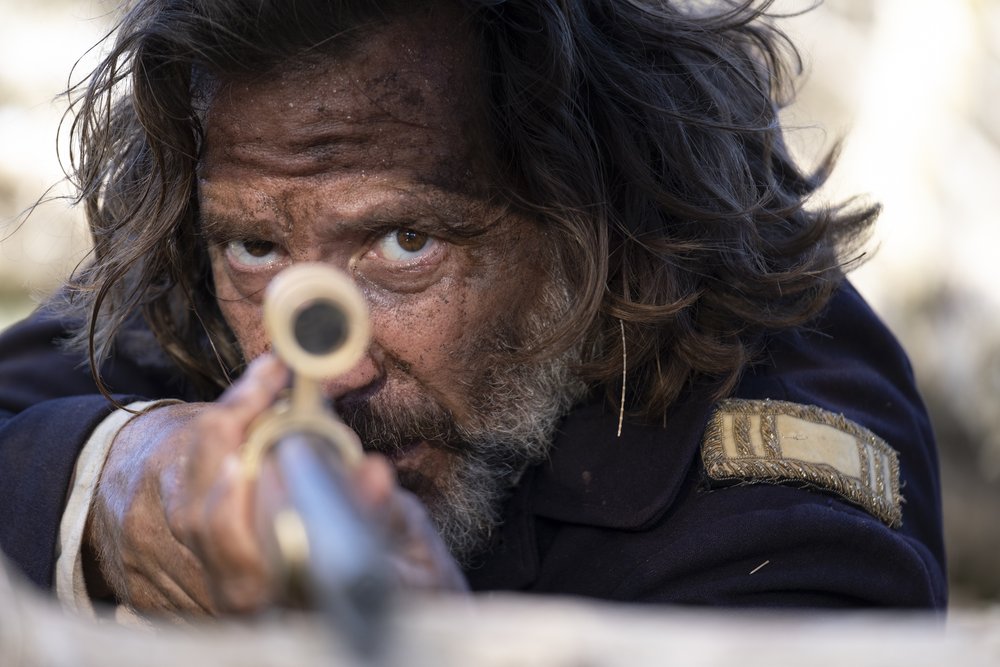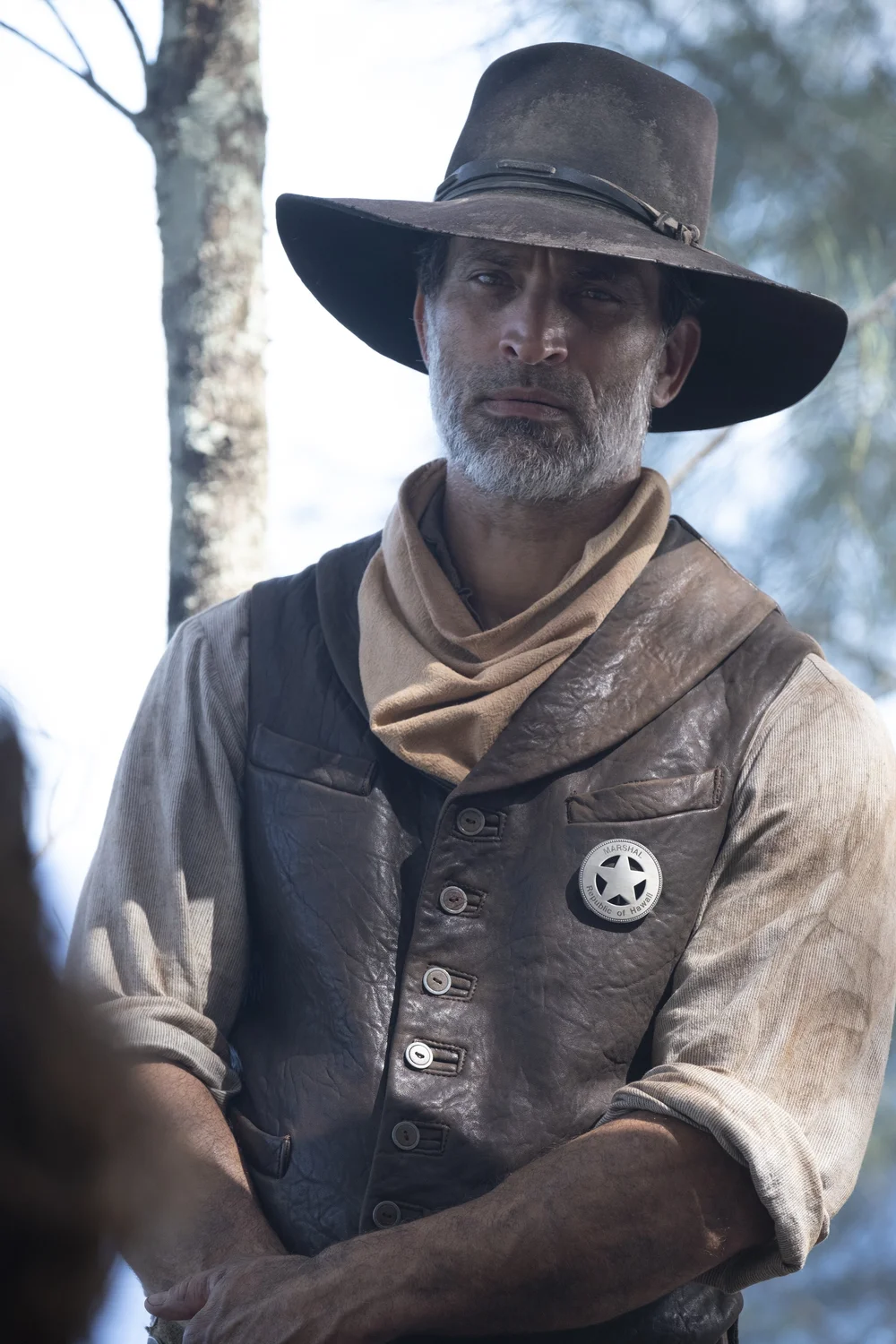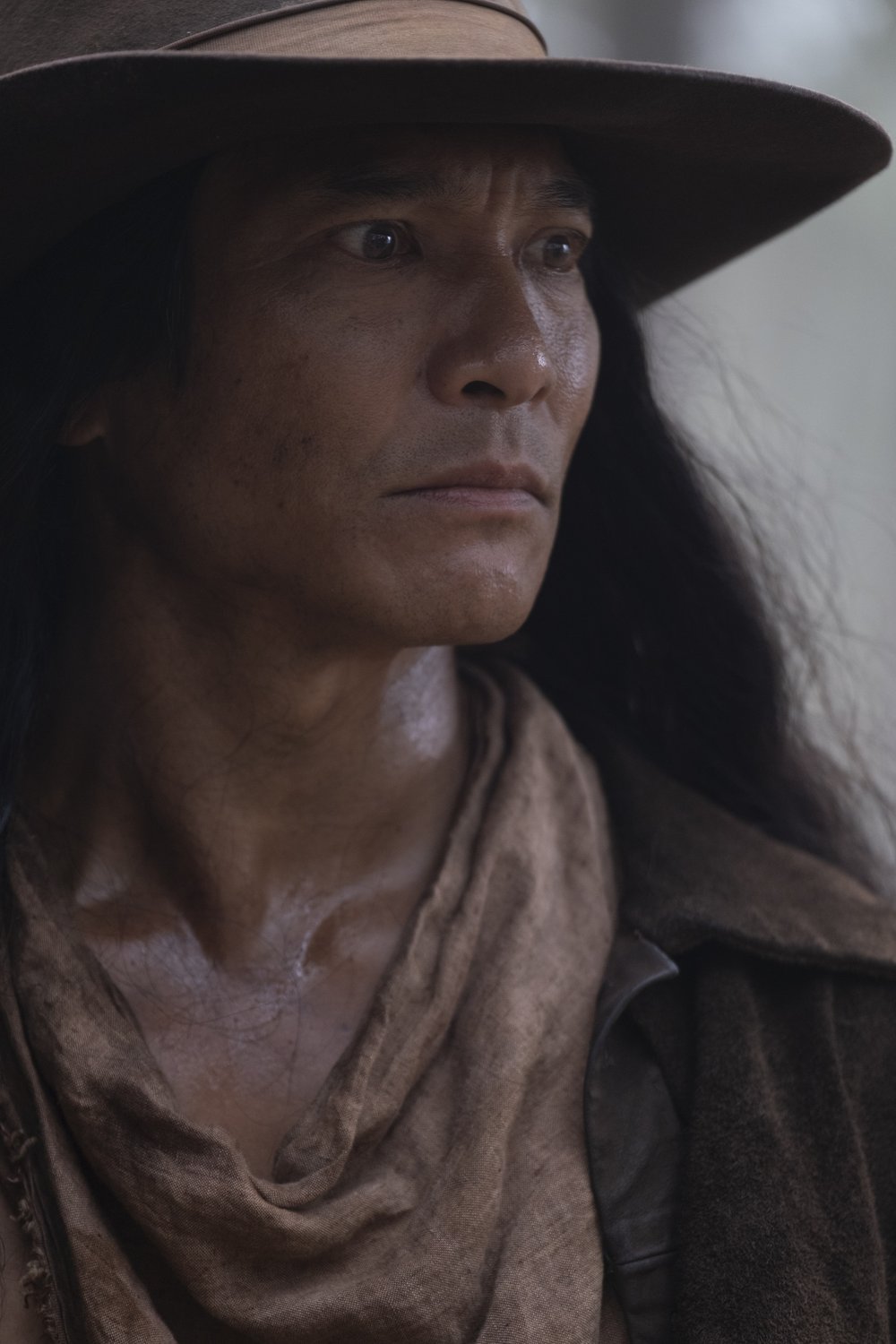
Photos courtesy: Lynmar Films
THE WIND AND THE RECKONING–4 STARS
One of the most appreciable traits about movies is their ability to give faces and voices to human history across a myriad of cultures and time periods. If you ask them, astute film viewers will lose count how many “based on” or “inspired by” movies about true stories have instigated wider and deeper educational dives to learn more. The Wind and the Reckoning joins that honorable tradition and, even greater than faces and voices, it gives its depicted history a literal and figurative fighting chance.
LESSON #1: HAWAI’I WASN’T ALWAYS HAWAII– To the uninformed, the vacation hotspot archipelago known to be the 50th state of the Union was acquired through an illegal overthrow of the local monarchy in 1894 that led to annexation as a territory. During that era, the introduction of Hansen’s Disease— better known as leprosy– by foreigners spiked the rates of death and disfigurement among the territory’s people. The disease was virtually criminalized to the point where any infected inhabitants were separated from their families and detained in a leper colony, dubbed the “Grave of Living Death,” on the island of Moloka’i. Mark that down as shameful American history that led to a formal Apology Resolution in 1993.
The public health crisis and its banishment initiatives sets the stage for The Wind and the Reckoning. The film, directed by David L. Cunningham in his second foray on Hawaii after 2018’s Running for Grace, presents the documented true account of a married couple who would not be separated by the authorities and their ensuing clash versus American soldiers. The resulting psuedo-Western indie movie combines respectful historical notes with the punch of that aforementioned fighting chance.
LESSON #2: NOTHING WILL SEPARATE FAMILY– Ko‘olau (Jason Scott Lee of Dragon: The Bruce Lee Story) is a working cowboy helping out a Kaua’i landowner (the late Lance Kerwin) when he and his pre-teen son Kaleimanu (Kahiau Perreira) are discovered to have contracted the feared bacterial infection. Ko’olau’s younger wife Pi‘ilani (Finding Ohana’s Lindsay Marie Anuhea Watson) shows no sign of the disease, but is not allowed to join her family on Moloka’i. Resisting arrest against the local sheriff (steady TV actor Matt Corboy) sets off a shootout that gets Ko’olau branded as a murderer in the newspapers.
Knowing reinforcements and reprisal are coming– in the form of Army Captain McCabe (Lost breakout star Henry Ian Cusick) and U.S. Marshall Hitchcock (Johnathon Schaech of That Thing You Do!)-- Ko’olau flees with his family upcountry. Their escape destination is the dormant lava tube cave system of the Kalahau Cliffs. They may be outnumbered, but they know the land and are steadfast to make a life-or-death stand to stay together.
LESSON #3: RESPECTING CULTURAL HISTORY– The Wind and the Reckoning comes from a Swiss-American director and a Yankee writer, but it tapped into the proper Hawaiian roots for respectful cultural depictions. Performers of Hawaiian descent or ancestry, including Lee and Watson in the leads, populate this film from top to bottom. Even better, you won’t find a token “white savior” in this film as an excuse to get a bigger name on the poster, and a generous portion of the movie’s dialogue is spoken in the island’s native language. It is easy to admire The Wind and the Reckoning’s lack of shortcuts in the representation and inclusion departments.
Moreover, the screenplay by John Fusco (Young Guns, Hidalgo) quite fluidly combines coveted tranquility with inescapable strife. Lindsay Marie Anuhea Watson’s Pi’ilani narrates this story with poetic asides comparing seasons of nature and man. Jason Scott Lee, still buff in his mid-50s underneath that wide-brimmed hat and long duster, cuts an imposing figure as her principled husband and heroic champion. Meanwhile, Ko’olau’s adversaries, especially Henry Ian Cusick as the relentless captain, stoke a fire of confrontation suitable for carrying out harrowing atrocities and rattle audience morale.
The very locally-experienced production team of The Wind and the Reckoning reconciles those two tones with naturalistic synergy. The same drone photography and outdoor camerawork from cinematographer Scott Lee Mason that highlights the ethereal beauty of the filming locations cherished by the indigenous characters of the movie also squeezes embattled tension from the same angles and sources. Elia Cmiral’s score matches that cadence to swing its orchestration cues from serenity to danger at a moment’s notice.
Thanks to those creative choices, The Wind and the Reckoning’s best trait is its overall balance. Cunningham’s movie is never shy with the bloodshed, yet it’s not slaying foes for pulpy violence’s sake like a Tarantino-esque avenging angel. The rooting interests are clear between the soldiers and the locals, but the act of taking life brings emotional conflict and the befallen losses afterwards sting painfully, just as they should in an upstanding film.
Through those careful intentions, the edge of a thriller smashes into a campfire tale with meaningful results in The Wind and the Reckoning. All of it leads to well-earned legend-making and an emphasis on the greater history of the Aloha State that the majority likely forgot or never knew. Like Te Ata, The Woman King, Till and several other films over the past decade, this movie instantly establishes a welcome place in a Social Studies teacher’s go-to cinematic repertoire






LOGO DESIGNED BY MEENTS ILLUSTRATED (#1117)
from Review Blog https://ift.tt/LF90ulp







No comments:
Post a Comment